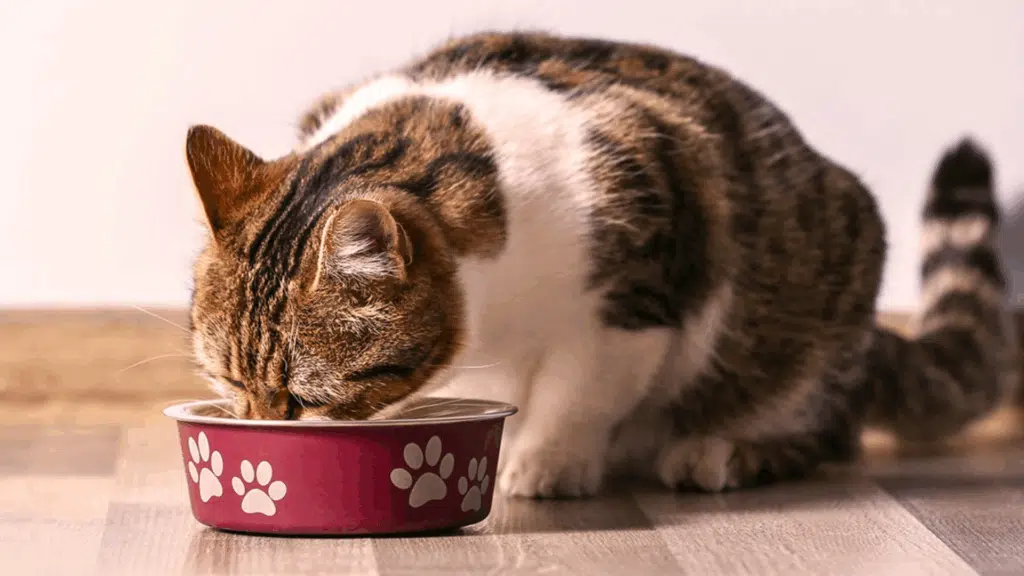I know how tricky it can be to keep a cat still long enough to clean its teeth. But good dental care isn’t just for dogs; your cat needs it too.
In this post, I’ll show you how to clean your cat’s teeth at home in simple, stress-free steps. You’ll learn what tools to use, how often to brush, and how to make the process easier for both of you.
We’ll also look at:
- Signs your cat might have dental issues
- Ways to keep their mouth healthy between cleanings
- Tips for introducing brushing without a fight
My goal is to help you keep your cat’s teeth clean and their breath fresh, without turning it into a daily battle. Let’s get started with what you’ll need and how to make your cat comfortable during the process.
Step-By-Step: How to Clean Your Cat’s Teeth at Home
Cleaning your cat’s teeth at home keeps their mouth healthy and helps prevent painful dental problems. Patience, consistency, and the right tools are key to success.
Step 1: Get Your Cat Comfortable
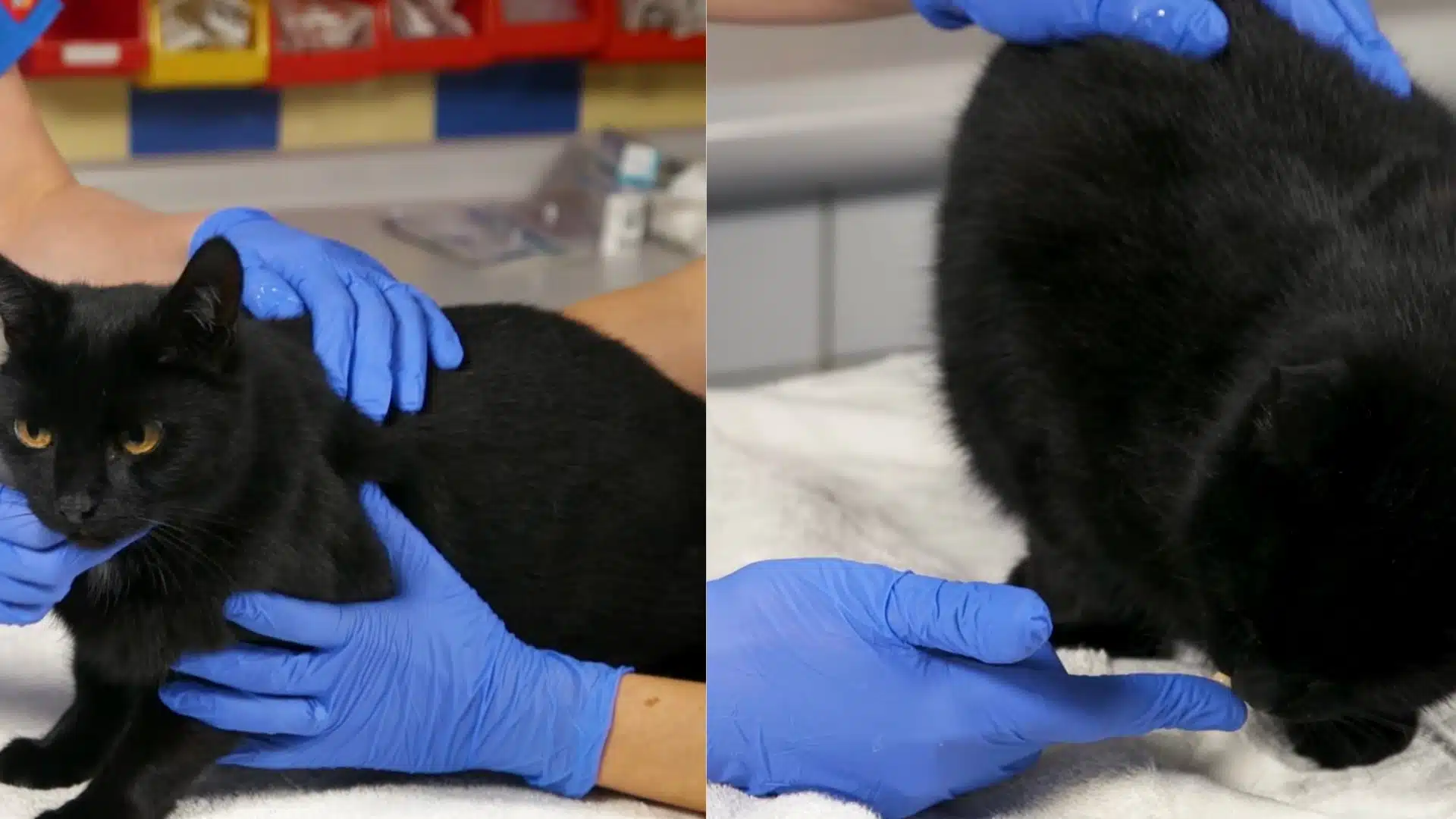
Pick a quiet time when your cat feels relaxed and more likely to cooperate. Sit beside them at their level and let them lick a little cat toothpaste from your finger.
Repeat this for a few days so they get used to the taste and smell.
Speak softly and move slowly to build comfort and trust. If they stay calm, reward them with gentle praise or a small treat.
Doing this daily helps your cat connect brushing time with something positive and stress-free.
Step 2: Introduce the Toothbrush

When your cat accepts the toothpaste, put a small amount on a toothbrush made for cats and let them lick it off. This helps them get used to the brush’s shape and texture without fear.
Continue for several days before brushing. Choose a soft-bristle or finger brush to keep their gums safe.
Stay patient and calm, and reward them after each session. The goal here is not brushing perfectly but helping your cat feel completely comfortable first.
Step 3: Let Them Feel the Brush
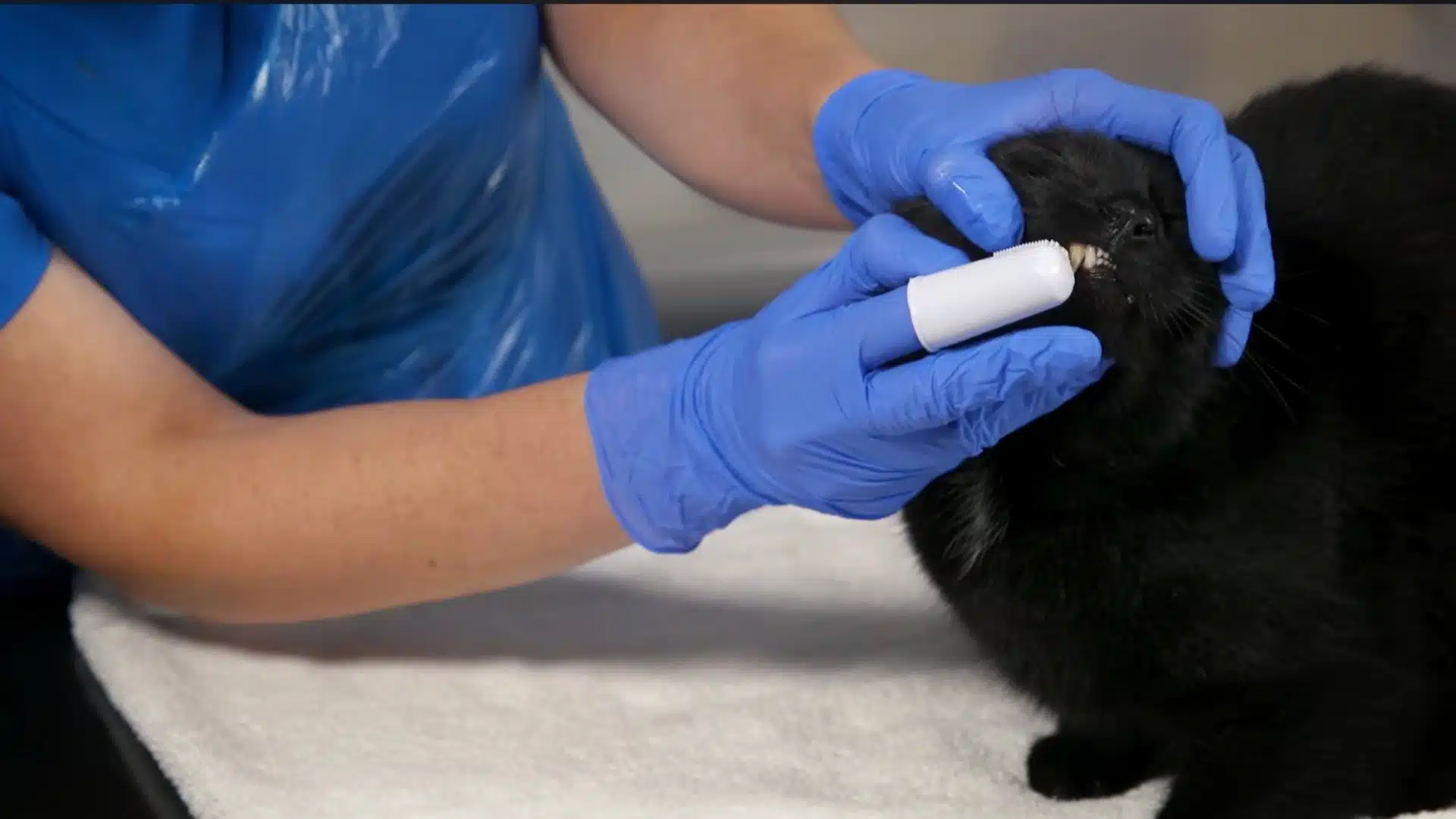
Once your cat feels calm around the brush, gently lift their lips and touch the bristles to their teeth for a few seconds. Don’t brush yet, just let them get used to the feeling.
Keep your tone calm, then reward them with a treat or gentle petting afterward. Repeat this step daily to build confidence.
If your cat pulls away or shows stress, stop and try again later. These short, relaxed sessions help make brushing easier over time.
Step 4: Start Brushing Gently
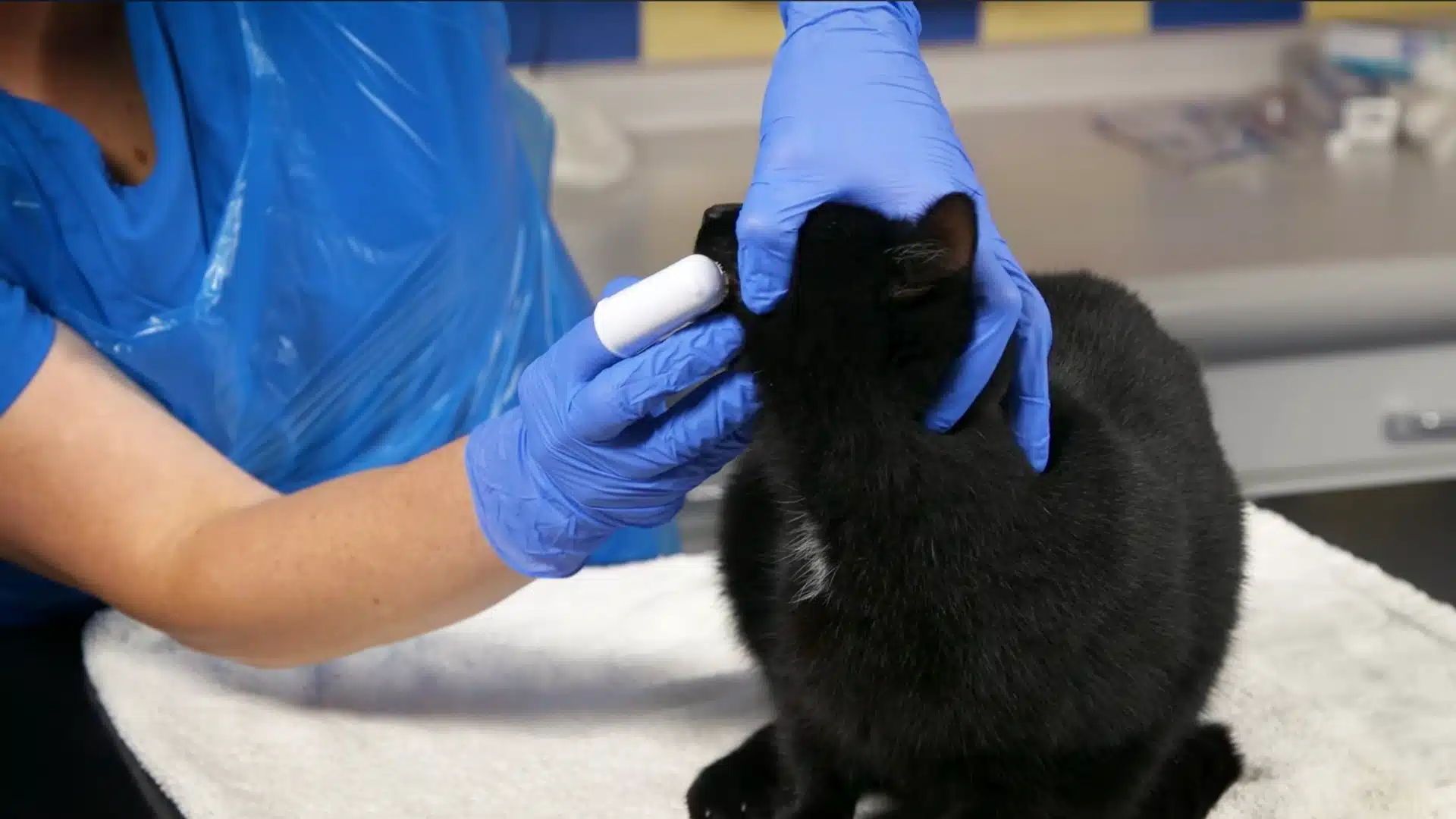
When your cat stays relaxed with the brush, begin brushing slowly at a 45-degree angle toward the gumline. Focus on the outer surfaces where plaque builds most.
Use short strokes, pausing if they seem uneasy. Keep sessions under a minute at first, then slowly increase the time. Watch their reaction and stay gentle. Always end with praise, petting, or a favorite treat.
With patience and practice, brushing becomes a calm routine that keeps your cat’s teeth clean and healthy.
For a more detailed visual guide, check out the video tutorial by Cats Protection on their official YouTube channel.
Helpful Resources for Cat Dental Care
Finding trustworthy resources can make caring for your cat’s teeth much simpler and more effective.
The right guides show you how to brush correctly, spot early signs of dental trouble, and select safe cleaning tools for your pet.
Many vet clinics also provide printable checklists for at-home monitoring and maintenance, helping you stay consistent with your cat’s care routine.
You can also find free videos and articles from reputable veterinary organizations and schools.
These tutorials demonstrate safe brushing techniques, ways to reduce stress, and easy routines to follow.
Using these reliable resources gives you the confidence to clean your cat’s teeth properly, protect their oral health, and handle minor dental concerns before they turn into painful or costly problems.
Check out some videos from these sources:
By going through these trusted resources, you can learn proven techniques, find professional guidance, and stay updated on feline dental care best practices.
Alternatives to Brushing
If your cat dislikes brushing or is too anxious, there are several effective alternatives that can still support good dental health. These options are easy to use and help reduce plaque buildup when used regularly.
- Dental chews: Specially designed treats that help remove plaque while satisfying your cat’s natural chewing instincts.
- Oral rinses: Cat-safe liquids added to food or water to help reduce bacteria and freshen breath.
- Water additives: Formulas mixed into drinking water that promote oral hygiene and reduce tartar formation.
- Dental diets: Special kibble textures that clean teeth while your cat chews.
- Powders and supplements: Added to food to support gum health and maintain fresh breath.
- Dental toys: Textured chew toys that gently scrape away plaque during play.
These alternatives work best when combined with regular vet visits and a balanced diet to maintain long-term oral health.
When to See a Veterinarian?
Regular vet visits play an important role in preventing serious oral issues.
During professional dental checkups, veterinarians can inspect your cat’s mouth thoroughly, remove deep tartar, and treat gum infections early.
Cats should see a vet if they show any signs of dental problems, as these can be easy to miss until they become painful.
Common symptoms to watch for include bad breath, drooling, pawing at the mouth, difficulty eating or chewing, and swollen or bleeding gums. These signs often point to underlying dental disease.
Veterinarians can also detect hidden issues beneath the gum line using dental X-rays.
After a cleaning, follow-up visits help track progress, prevent new buildup, and keep your cat’s teeth and gums healthy long-term.
Preventing Dental Issues in Cats
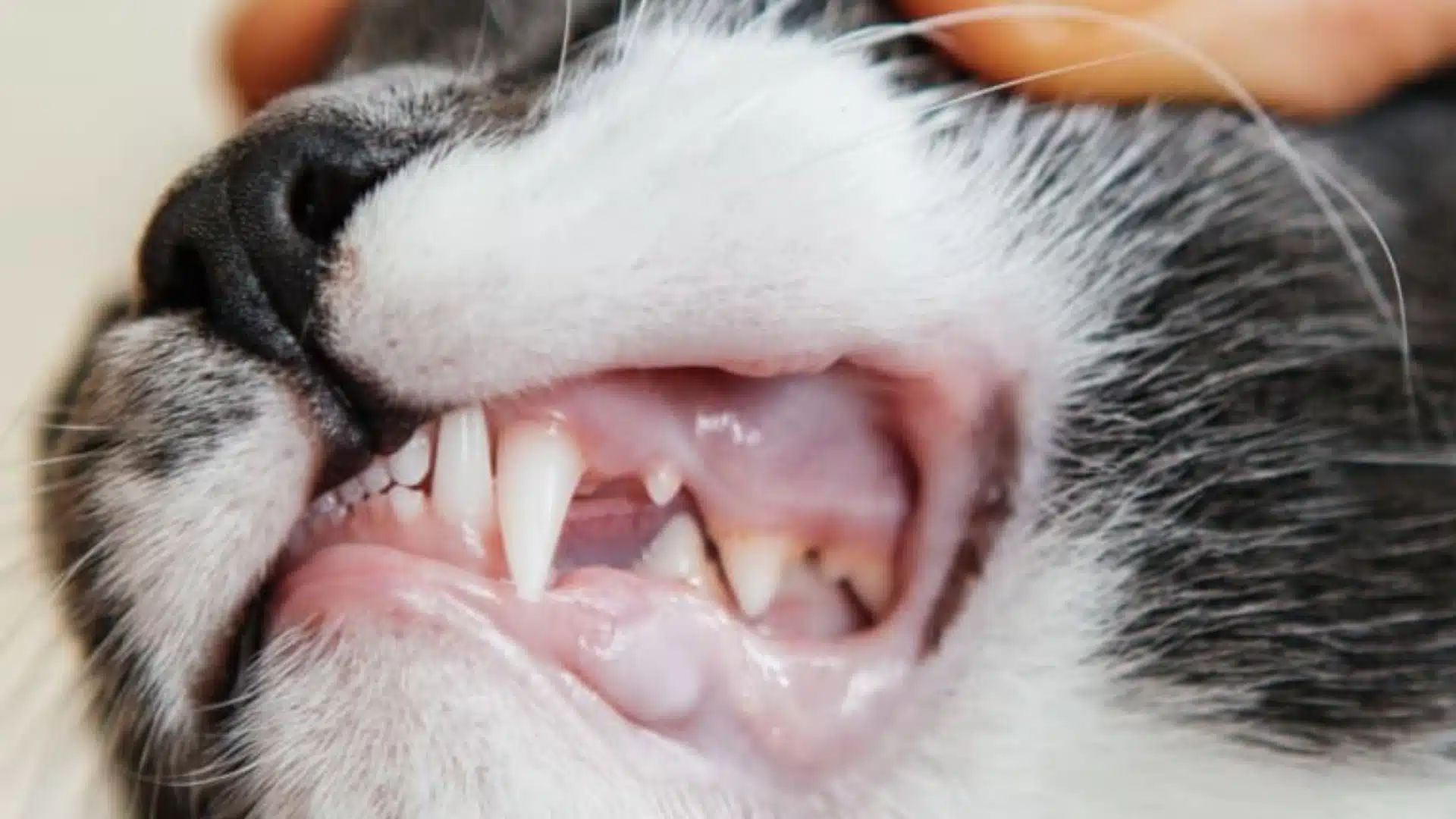
Keeping your cat’s mouth healthy requires consistent care and awareness. These simple habits can prevent painful dental problems and protect your cat’s overall health.
- Brush your cat’s teeth regularly using cat-safe products.
- Schedule professional dental cleanings annually.
- Provide dental-friendly toys and chews.
- Feed a balanced diet that supports oral hygiene.
- Monitor your cat’s mouth regularly for redness or swelling.
- Encourage hydration to maintain saliva flow and prevent dryness.
By staying active and observant, you can help your cat maintain a clean, healthy mouth and enjoy a more comfortable, longer life.
Conclusion
Keeping your cat’s teeth clean is one of the most caring things you can do for their health and happiness. Regular brushing helps prevent pain, improves their appetite, and keeps them active and content.
I truly believe every cat deserves a life free from dental problems, and with a few minutes of care each week, you can make that happen.
Focus on small, consistent steps, like gentle brushing and using safe dental treats, to keep their mouth healthy.
Over time, you’ll notice a big difference in their comfort and mood. Do you already brush your cat’s teeth or have a routine that works well?
Share your experience and any helpful tips in the comments below to inspire other cat owners.







